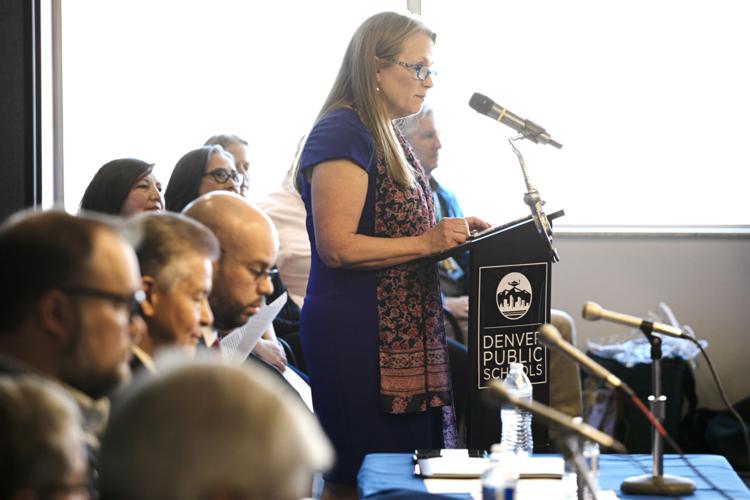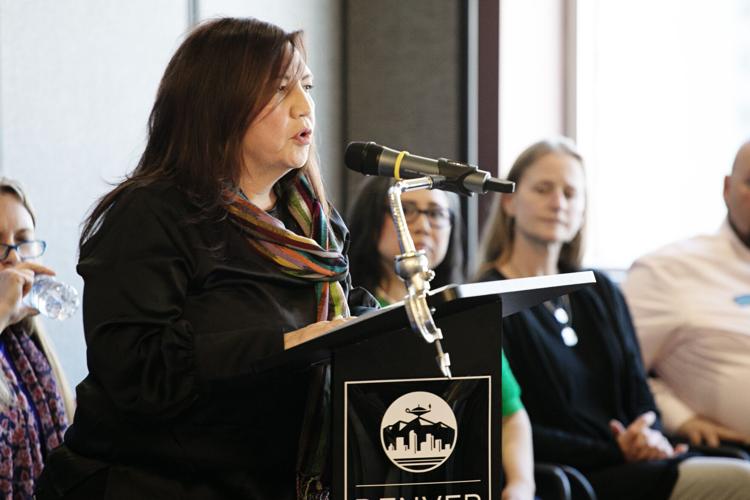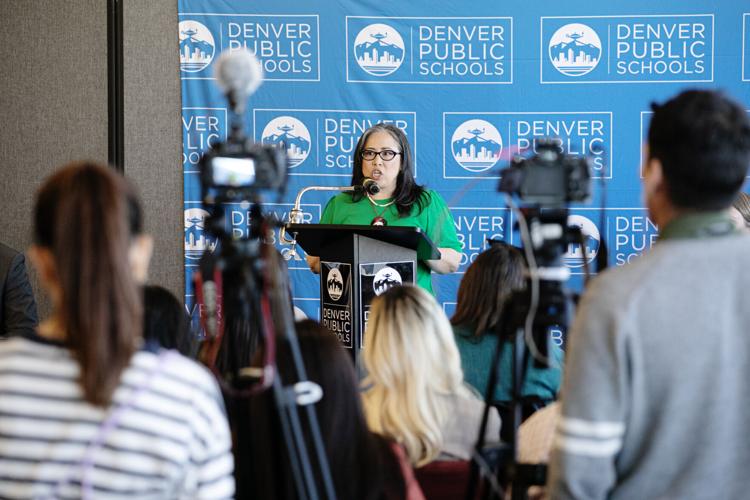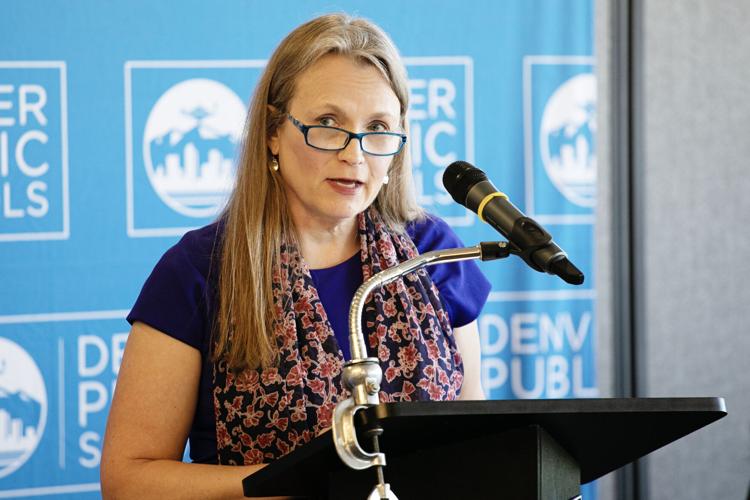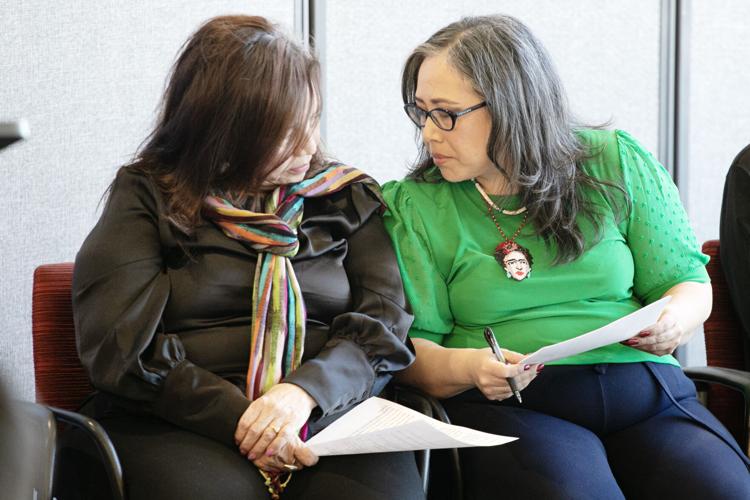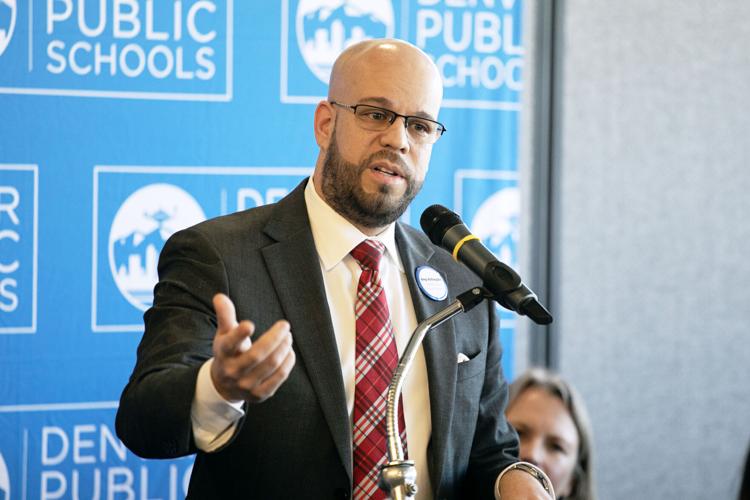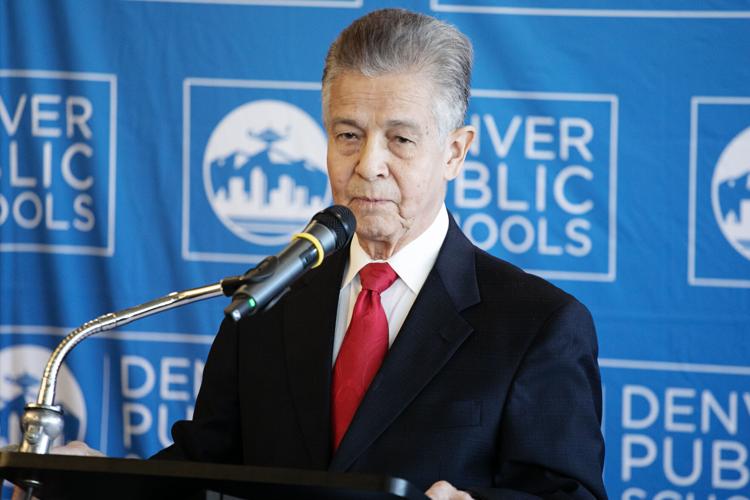Denver school district releases report on Latino community
Denver Public Schools on Tuesday released the long-awaited La Raza report, which was designed to capture the experiences of the Latino community in Colorado’s most populous city.
Conducted by The Multicultural Leadership Center, the report relied on a historical analysis, literature review, academic achievement and student population data, as well as surveys to capture the experiences of parents, staff and students, author said.
Everyone from Superintendent Alex Marrero to Board President Carrie Olson and former Board President Xóchitl Gaytán — who illegally crossed the border with her mother as a toddler before becoming a U.S. citizen in the 1980s — described the report as “historic.”
“When our Latino students succeed, all of our students succeed,” said Board Vice President Marlene De La Rosa, who represents northwest Denver.
With the report’s release on the eve of the 55th anniversary of hundreds of Chicano and Chicana students at West High School having walked out of class in protest over racism on their campus, Olson and others said the timing could not have been more apropos.
At the time, students had demanded more bilingual classes and Chicano history and literature to be integrated in the curriculum, among other things.
“[T]he last fifty years have brought DPS and Latino families to a Crossroads, requiring a serious movement to ensure ongoing, long-term, and sustainable success for Latino students and their families,” the authors wrote.
“A ‘crossroads’ implies a decision point for the groups to either stay in place or to move forward,” they said.
The report touched on many of the same themes students identified five decades ago.
“History repeats itself,” Gaytán said.
In 2022, the district sought research that examines “the barriers and opportunities that exist within Denver Public Schools for Latino students, families and staff.”
The report, which was extended to include community surveys, cost about $203,000, said Steve DelCastillo, principal investigator and project director.
Among the study’s findings:
• Eight in 10 Latino teachers reported feeling school policies allow them to have a positive impact.
• Researchers found no statistically significant difference over a 15-year-period in overall reading and math scores at district-run and charter schools, which emerged in Colorado in the early 1990s.
• Despite a district emphasis on equity, researchers said they found what they called the “brown ceiling,” in which Latinos are underrepresented and therefore misunderstood in district and school leadership, teaching and central office and support positions.
• A key geographic shift of Latino students from north and west Denver occurred between 2008 and 2022, likely driven by gentrification. And gentrification again may play an outsized and unpredictable role in future movements due to rising rent.
• An increased number of White and Latino students have scored below expectations in math and reading since 2015, indicating a rocky transition from the old to new academic standards.
Kathy Escamilla, a University of Colorado Boulder professor emeritus who has worked in bilingual education, said the stories collected in the focus groups provided the research team with some unanticipated insights.
What Escamilla found surprising is a shared shame around language.
“Kids who had lost Spanish were embarrassed that they couldn’t speak it,” Escamilla said. “Kids who have just arrived and didn’t speak English were embarrassed because they couldn’t speak English.
“The kids who were the proudest were the kids who were bilingual and biliterate. And that’s not necessarily something that was equally offered at all the schools, but it’s an aspiration that, I think, the district ought to embrace.”
Researchers also highlighted in the report a decline in Latino enrollment, with the district having lost nearly 4,600 students between 2015 and 2022, while the number of White students increased by roughly 4,200.
Just released, the report is already somewhat dated.
This is because the data used for the report was collected last summer before the district experienced an unprecedented wave of immigrant students, DelCastillo said.
Over the past 15 months, Denver has welcomed nearly 40,000 immigrants from South and Central America, many who crossed the border illegally with school-age children. While not all of them stayed in the city, as many took Denver’s offer of bus tickets to their final destination, schools still felt the impact.
Although the district has faced declining enrollment that saw the board of education shutter three schools last year, the district this academic year actually saw a bump — largely credited to the immigrant influx.
However, the majority of these out-of-country students arrived after the October count, which is used to determine school funding.
The report did note that “dramatic increases” in immigrant families has stretched the district’s resources.
The 266-page report is replete with historically significant times for Latinos, including the Ku Klux Klan in Denver; redlining (the discriminatory practice of withholding financial services in predominantly minority communities); amnesty under former President Ronald Reagan; and, landmark U.S. Supreme Court cases like Brown v. The Board of Education in 1954 and the Keyes case in 1973, in which justices ordered the district to desegregate.
“Everything we do today is usually a result of history,” DelCastillo said. “We don’t live in a vacuum.”
The report also offered more than 30 recommendations.
Marrero said Tuesday that although the report did not hold any “aha” moments nor contain many surprises, he admitted that some of the findings were painful to read.
“It requires no effort to be a critic,” Marrero said.
Marrero added: “Now we have evidence and even more so a road map, thanks to our researchers.”





